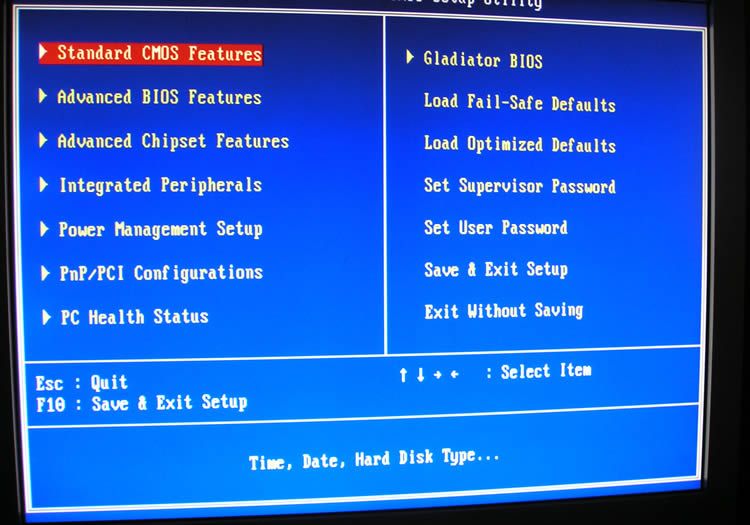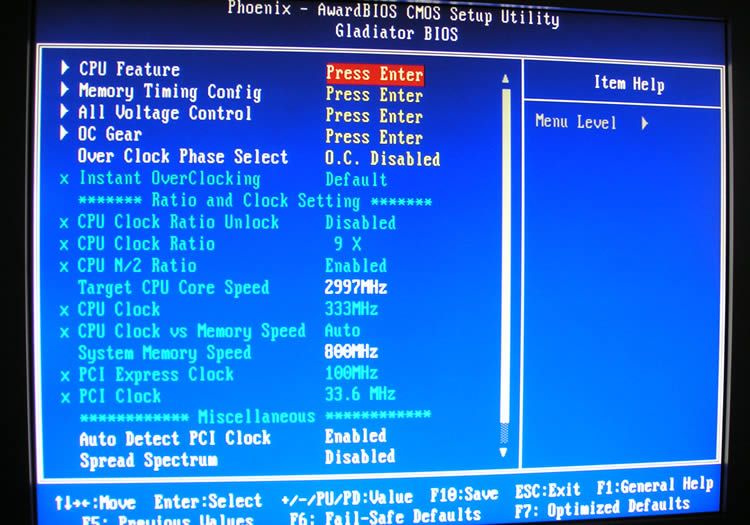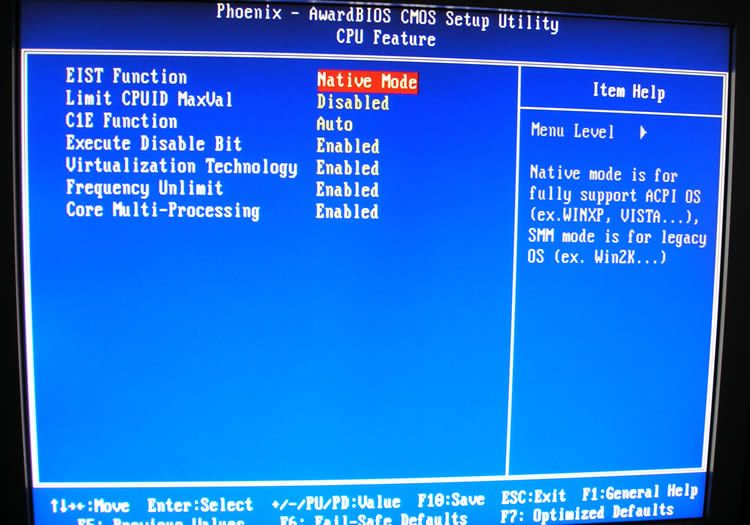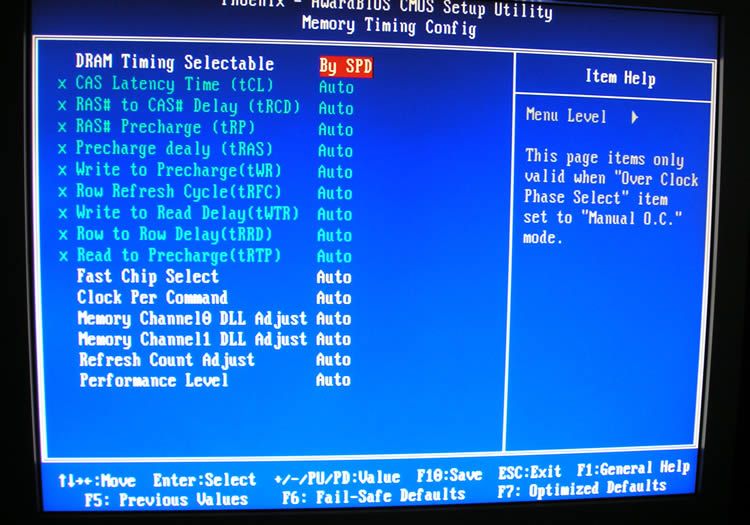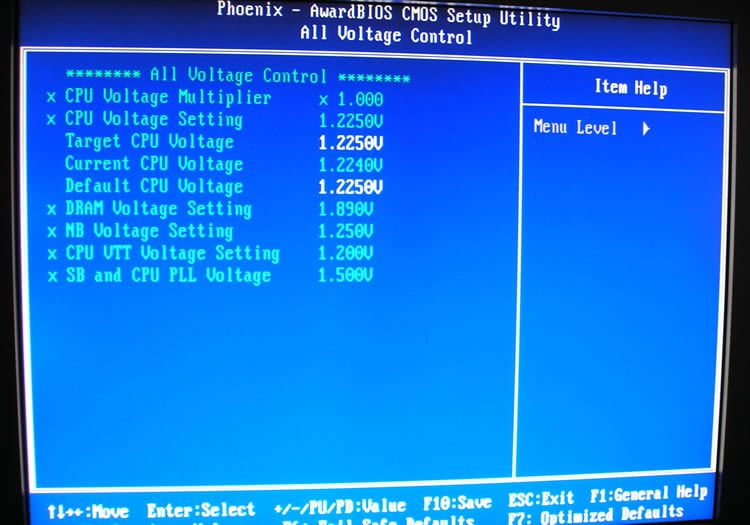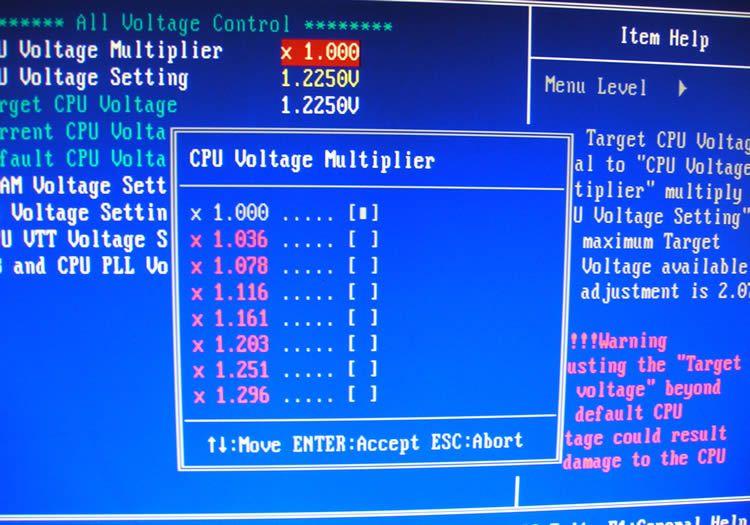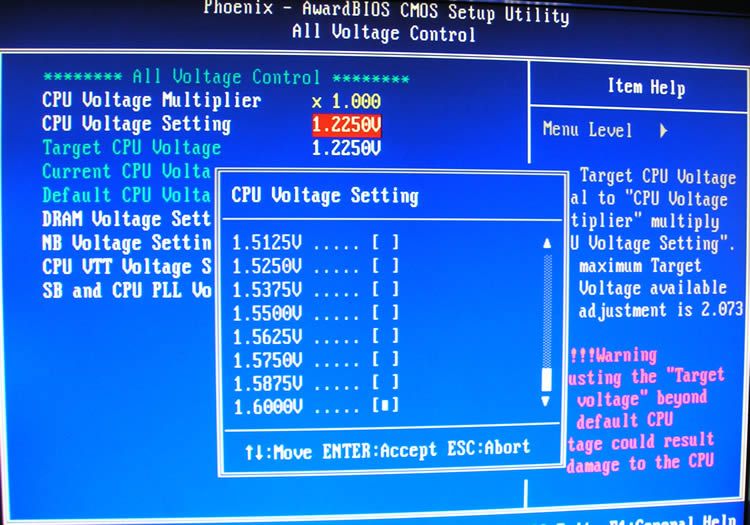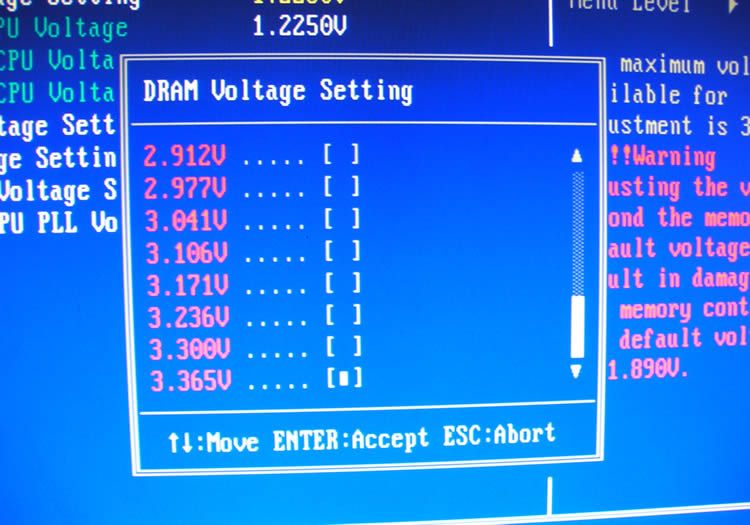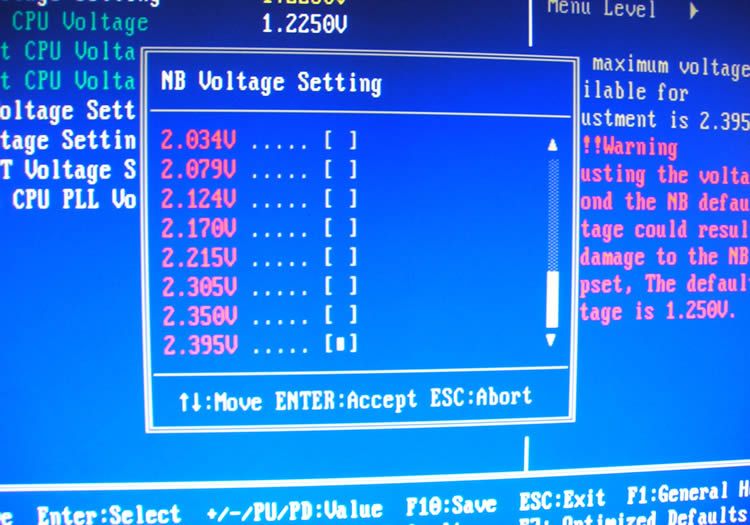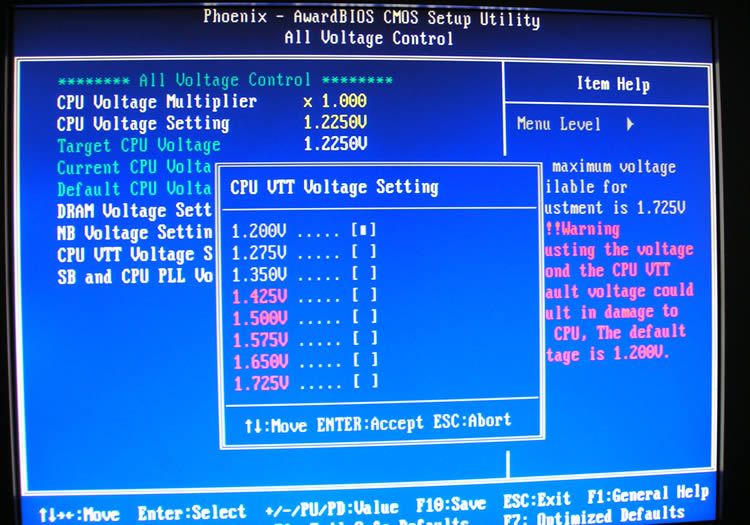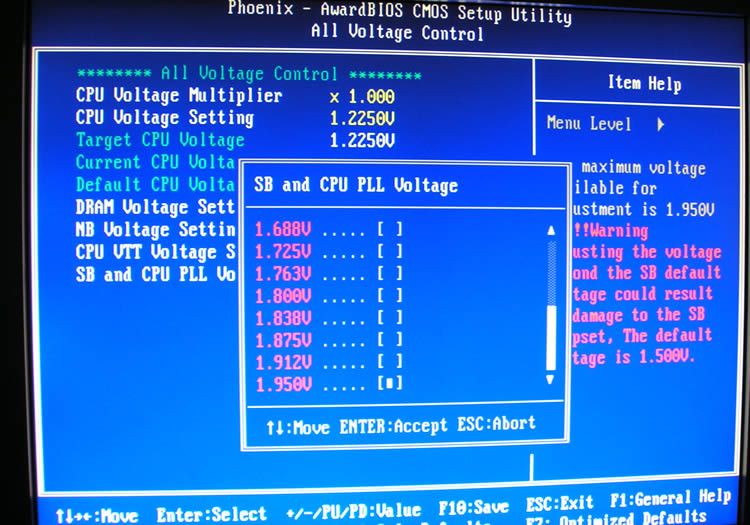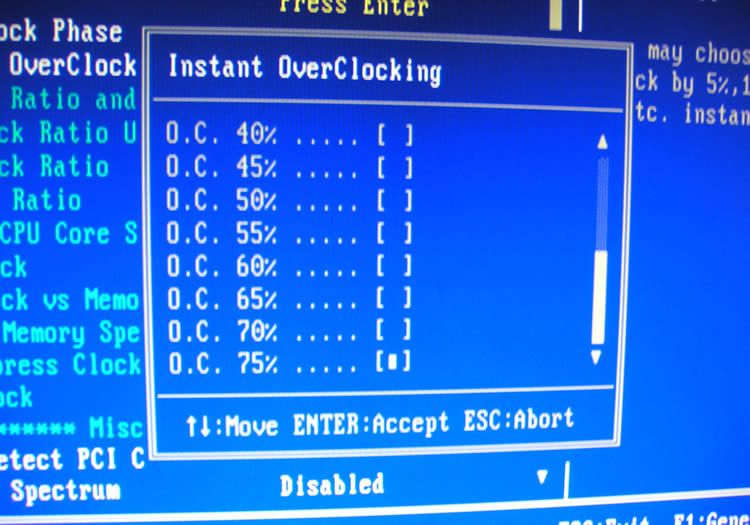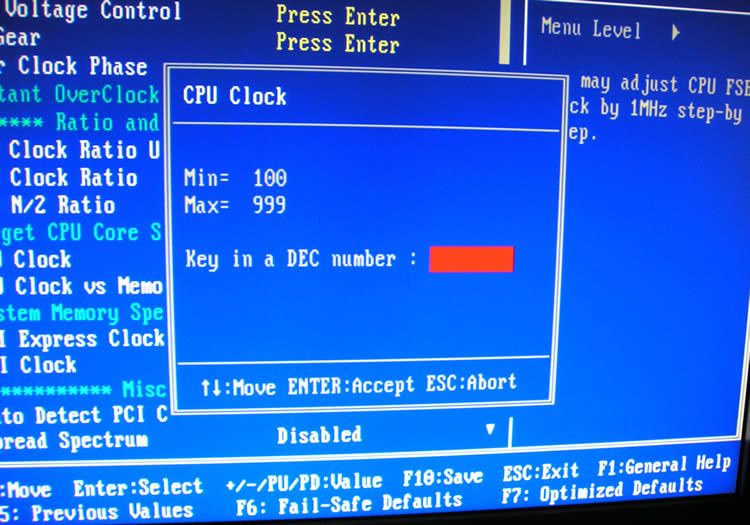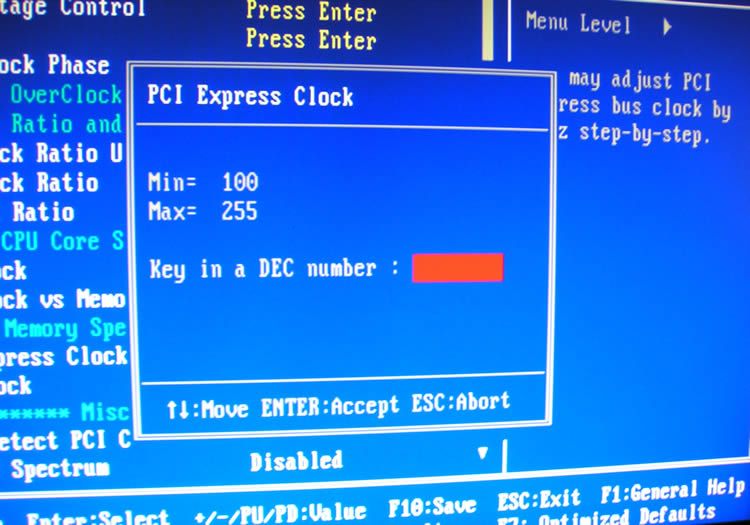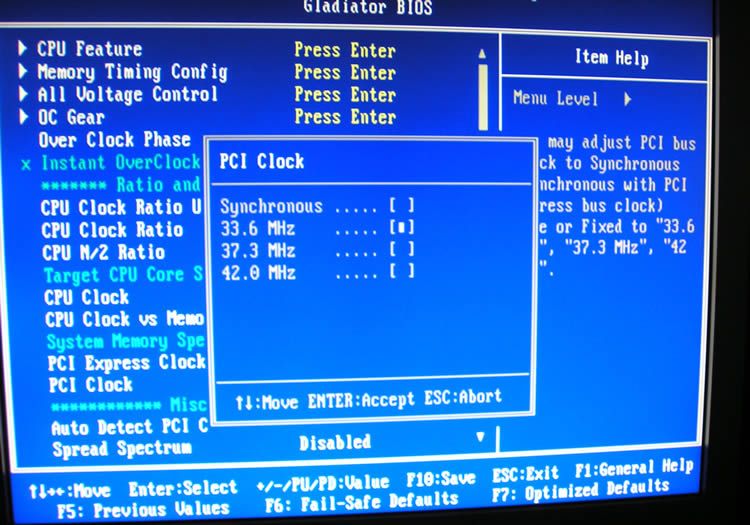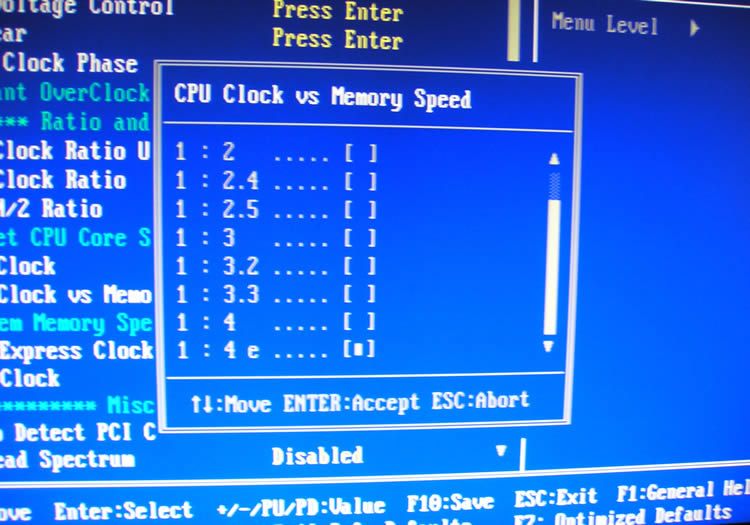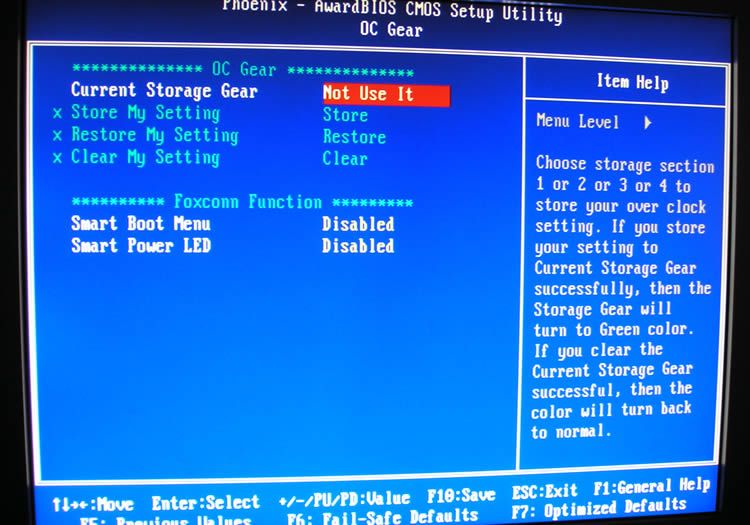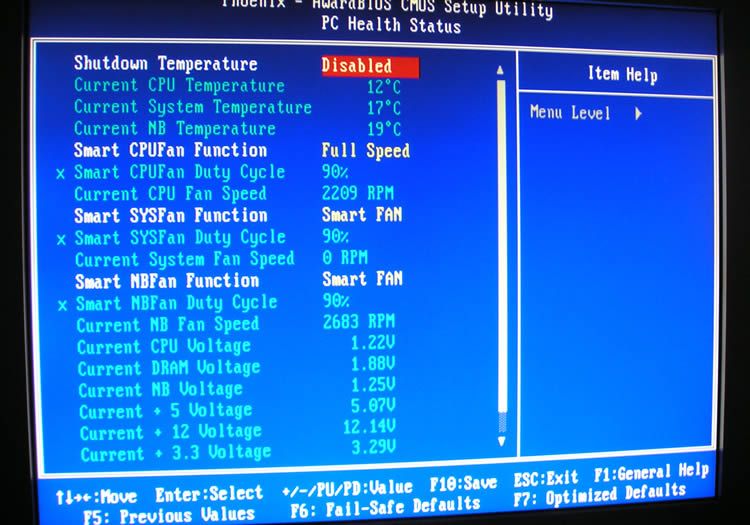Test: Foxconn MARS - UK
Bundkort, Intel d. 19. maj. 2008, skrevet af Polarfar 0 Kommentarer. Vist: 6051 gange.
Billed behandling:
Oversættelse:
Pristjek på http://www.pricerunner.dk
Produkt udlånt af: Foxconn
DK distributør: Frode Herløv
BIOS
The special thing about this P35 motherboard compared to the rest, is that the BIOS has had a shot of vitamins. Former DFI engineers have worked with Foxconn to make this a unique board. And it is indeed. Besides the standardsettings, Foxconn have made a special overclocking menu with the name Gladiator. You be warned - you hear! - If you fail to overclock you die......or the board does......just maybe :smile:
The Gladiator part is didvided into subsections for cpu, memory and voltages, and a frequency control part. The first menu indicates which of the cpu features are active.
The, for us, interresting bits are EIST ( speedstepping ) and C1E options, that will shut down the parts of the cpu not in use, and lower the voltage and frequency. Disable these to get a system that runs full speed at all times. Usually this is only done when you overclock the system to test for stability.
The next submenu is memory timing.
You can let the memory SPD settings run the show, or you can manually force your settings to obtain a specific timing. There are quite a lot of paramters to play with here, but usually the top four are the only ones you need to play with. For the overclocking test I changed my settings from 4-4-4-12 to 5-5-5-15 to make my memory modules stable beyond 500MHz.
The next bit hold all the voltage options for the various IC's.
On this sceenshot the parameters are not active, but if you choose manual OC mode you can adjust the voltages to your needs. When changing the Vcore for the cpu the DFI engineers left their mark.
The parameter is actually two parameters. A Vcore that can be adjusted to 1.6 volts, and a multiplier that will take us all the way to 2.0735V. A very peculiar way of handling this, but apparantly it gives a more stable Vcore. If you ask me I find it somewhat irritating to have to deal with two parameters for the same setting, and the engineer is probably the only one who knows why it is divided in two. And what is the more stable option - 1.55V and x1 multiplier, or 1.3V on 1.2X multiplier ?
The rest of the voltages are straight forward, and the maximum limits are very high. When the voltages are up a notch or two and your memorymodules have been tweaked to oblivion, you need to decide how far you want to take your overclock. There are two options. An instant OC function that will indicate a percentage level for your ambitions. As seen in the screenshot below you can do a whopping 75% overclock in one go, but I do recommend you start a little lower.
The other option is the manual mode. Here you decide how much to tweak the system and where. Surely it will not be a too low fsb value that will limit your overclocking.
A full 999MHz is available, and the PCIe option also has an impressive 255MHz as its maximum. If you want to, you can even overclock the PCI socket.
Up to 42MHz, although I have no idea why anybody would want to overclock a soundcard or WiFi adapter. As wee can see Mars supports DDR2-1333 through a 1:4 divider, and if you have the 400MHz FSB QX9770 cpu plugged in, that means you run DDR2-1600 if you can find a pair. Looking through the specs it only mentions support for DDR2-800, and 1066 when overclocking, but this was probably written before the first BIOS updates came along. I had my CellShock memory running at their rated DDR-1000 speed with no problems.
The OC gear function gives you the option of saving your overclocking settings, either for later use or as a backup.
The last item in our walkthrough of the BIOS is the PC health menu that monitors all the temperatures and voltages. I would have liked this part to be more configurable.
It lacks the option to ignore the fan output. If you attach a watercooling kit on the cpu and do not install a fan in the CPU-FAN plug, the motherboard will halt during bootup with a cpu-fan error message. I had to press F1 every time I rebooted to make it start the OS, so eventually I installed an 80mm fan-unit in the plug to make it stop.
But all in all it is a very fine BIOS Foxconn have pieced together, with room for some minor improvements.
Anmeld
Information

